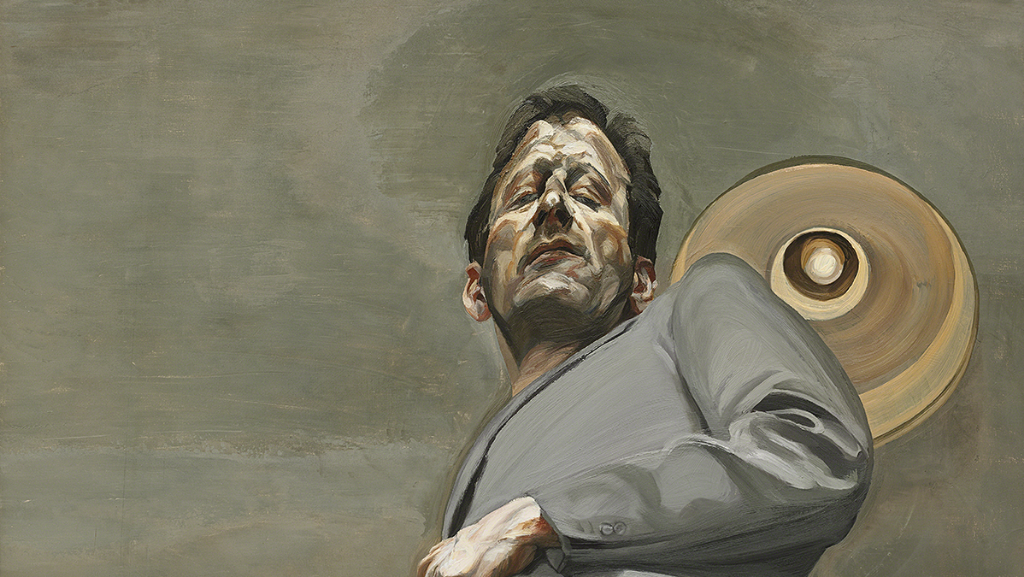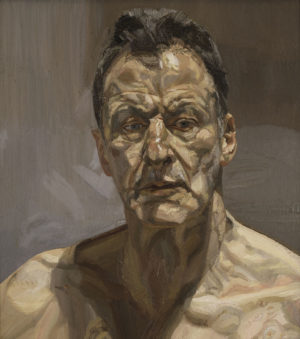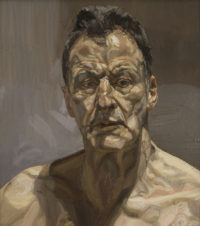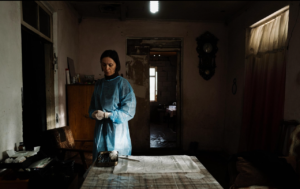Lucian Freud: The Self-Portraits at the Royal Academy

In the annals of 20th-century figurative painting, few artists can rival Lucian Freud for sheer singularity of purpose. Born to a German Jewish family, the grandson of Sigmund Freud, he was sent over to England aged 10 with the Kindertransport in the 30s. Discovering a flair for drawing, Freud would attend several art institutions, notably the East Anglian School of Painting and Drawing, where the artist Cedric Morris taught him the importance of detailed observation. Much of Freud’s legacy rests on his penetrating, highly painterly portraits of his sitters, who are portrayed with unsentimental directness.
Throughout his practice, Freud also subjected his own features to his piercing gaze, leading to comparisons with Rembrandt in his chronicling of time passing. The Royal Academy’s new exhibition is the first to be dedicated to this area of his work, bringing together over 50 self-portraits.
Upon entering the first two rooms of the show, it becomes evident that the artist’s early work bears few of the hallmarks of his later canvases. During the 40s one sees the young Freud developing a rather linear, delicate approach to rendering the human figure. This can be seen in Startled Man: Self-Portrait (1948) and Man with a Feather (1943): self-portraits with sharp lines and exaggerated features.
Much of the early work draws special attention to the figures’ eyes. In Hotel Bedroom (1954), the artist sits in a Paris hotel watching his wife of the time, Lady Caroline Blackwood, lying in bed. This was the last painting he produced while seated. City of Love it may be, but no marital bliss is to be found here. His wife faces away from him, ashen and with swollen eyes, one hand to her cheek. Freud is a menacing presence in dark silhouette, the painting loaded with pathos and tension. By placing his own image into a portrait of another individual, he draws attention to the relationship between artist, model and viewer.
By the early 60s, Freud’s technique had become more expressive, with his use of hog-hair brushes enabling him to produce more vigorous strokes. In Reflection with Two Children (Self-Portrait) (1965), Freud uses a mirror placed on the floor to paint himself. He appears to loom over us, dressed in a grey suit, his face peculiarly distorted. Strangely, he includes tiny portraits of his two young children, Rose and Ali Boyt, in the bottom left corner. Their innocently smiling faces contrast starkly with their huge, threatening father looking down at us. Rose Boyt has suggested that the reason was possibly a compositional one, giving balance to that area of the canvas.
At various points in this exhibition, Freud chooses to make an appearance in his work on a less prominent level. Upon first consideration of his 1984-5 canvas Two Irishmen in W11, one becomes puzzled as to why this study of the painter’s bookie, a robust figure seated with his son, belongs in a show focused on Freud’s self-portraiture. We then notice two small, upturned self-portraits leaning against the wall. Freddy Standing (2000-1) offers a glimpse of the ageing artist at his canvas, reflected in the window behind his naked son. A painting of the same period, Flora with Blue Toenails (2001) is ostensibly a night-time study of a young female nude; but the shadow of Freud’s head is clearly visible falling across the sheet on which she is posing, appearing like an act of dominance.
Everything builds to a memorable finale in the last room of this superb exhibition. In Painter Working, Reflection (1993), the 71-year-old Freud stands full length, in the nude save for his work boots, palette knife held in one hand, palette in the other. The ageing painter is no more compromising with himself than with his sitters, exploiting his mastery of impasto. There’s no flattery here, his sagging skin viscerally captured. It’s a powerful act of defiance in the face of mortality. The artist’s death in 2011 brought to a close his seven-decade career, charted here at the Royal Academy, which saw the development from youthful stylistic experiments to the unflinchingly objective portrayals of the human body that demand our attention.
James White
Images: © the Lucian Freud Archive
Lucian Freud: The Self-Portraits is at the Royal Academy from 27th October until 26th January 2020. For further information visit the exhibition’s website here.


























Facebook
Twitter
Instagram
YouTube
RSS